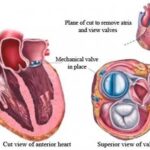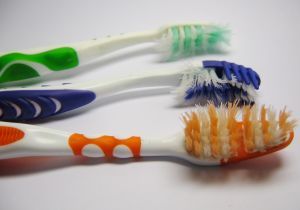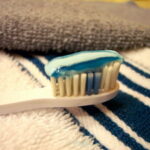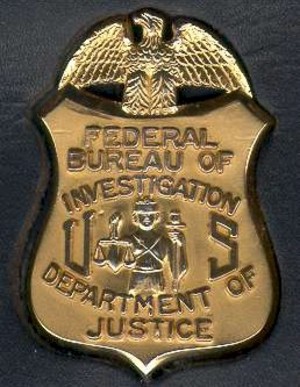Are you preparing for breast reduction surgery? Here are my suggestions for things to purchase and prepare for, to help make your recovery as pleasant as possible. Of course, always follow your doctor’s orders, especially if you’re experiencing any complications or health problems. Since I’m not in the medical profession, my suggestions are based on my surgeon’s recommendations and my experience as a patient, and should not be substituted for your own surgeon’s advice.
1. Prepare a day pack with medicines, a button-down shirt and pajama pants, required medical documents, toothbrush and toothpaste, and any other personal essentials to bring to the hospital on the day of your surgery. Also, don’t wear jewelry or bring your valuables with you. You may need to make a co-pay at the hospital before you’re admitted for surgery, but try to pre-register beforehand. Also, don’t forget to bring your goal bra. A goal bra is a garment in the cup size you hope to attain after surgery. For my surgery, I brought a goal bra with padded cups, so the surgeon could easily see what size and shape I wanted to become.
2) Have all your medicines in easy to reach locations at home. You may already be taking some medicines and vitamins as prescribed by your doctor. During the first week(s) of recovery, your range of motion may be very limited. Although you should be able to walk without assistance, expect to have less energy than usual. I prepared to have some pain, and in my case, it was limited to my breast and incision area. Follow your doctor’s advice for pain management, but make sure your prescriptions are filled and ready to go.
3) Buy some comfort foods in advance and keep them accessible at home. You may experience a decline in appetite for the first few weeks after surgery. I didn’t feel like eating much for the first week or so, and my appetite gradually increased back to normal. I actually lost a few pounds after surgery, and now I’m trying to maintain my new figure. Some foods you might consider buying are chicken broth, hot cocoa mix, pudding snacks, yoghurts, chocolate, string cheese or laughing cow, nutrition bars or drinks, herbal teas, and jello snacks (of course). I found that foods which are not spicy or strong tasting appealed to me during my recovery.
4) Bras, part I: Think comfort! Until your drains are removed, you won’t be wearing regular bras. The surgical bra I received from my plastic surgeon was form fitting, yet made of flexible fabric. It kept my breasts stationary, which seemed to minimize my discomfort. Since you’ll have drains hanging at your sides, you’ll need some loose fitting pajama tops or other button down shirts to wear. I emptied my drains several times daily, and kept a record of the fluid which accumulated in them. Make sure to bring this record to your checkups so your surgeon can evaluate whether you’re ready to have them removed!
5) Bras, part II: When you’re ready to graduate from your surgical bra, you’ll want plenty of soft, comfortable bras to wear both day and night. I had some cotton t-back sports bras (the kind you can purchase at Target) which were easy to slip on over my head. My surgeon advised against wearing underwire bras for several months post surgery. I agree ~ the underwire can dig into your scars and you may not realize it’s happening because of numbness in your breasts.
6) Scar Treatments: Depending on your surgeon’s technique, you may or may not have stitches which will be removed after the procedure. I did not require removable stitches, but instead my incisions were sealed with surgical tape. The surgical tape remained in place for about 2 weeks, and it was removed by the nurse practitioner during a post-surgical checkup. Also, my nipples were fixed in place with super glue! This technique ensured that the scars around the areola are healing nicely for me, and 4 months later are barely noticeable. I purchased some special gel scar-sheets which are shaped to cover breast reduction incisions. At $95 for two sheets, the scar sheets were quite expensive. I wore them for about 3 weeks, washing them each night and letting them dry before re-applying them on the scars. I think these gel sheets did help the scars to become less raised, but I felt they were too costly to continue. I tried some over-the-counter scar sheets, but eventually stopped using them altogether. My scars are reduced substantially at 4 months, and I expect that over time they will diminish even more.
7) Positive Attitude: You can’t buy this one, but I highly recommend it! Especially during the first few weeks, I lacked energy and stamina for everyday activities. Always, I tried to keep the proper perspective for my recovery ~ you can’t speed up time! If I had pain, I tried to focus on books, magazines or TV shows to keep my mind active. I gradually increased my activity level each day, which kept me motivated but not exhausted. I wrote in my journal and helped my children with small tasks like homework or crafts. Luckily, my husband and mother-in-law helped me with physical tasks like lifting things and washing my hair. In order to keep moving forward, make sure you don’t take any steps back by overexerting yourself!
I hope you have benefited from reading about my breast reduction surgery, and learned some helpful tips to help you with your own recovery. Remember, each woman’s body is unique, and there are no guarantees with surgical outcomes and recovery.
Breast Reduction Surgery: A Firsthand Perspective on a Personal Choice
Breast Reduction Surgery: My Results and Recollections





